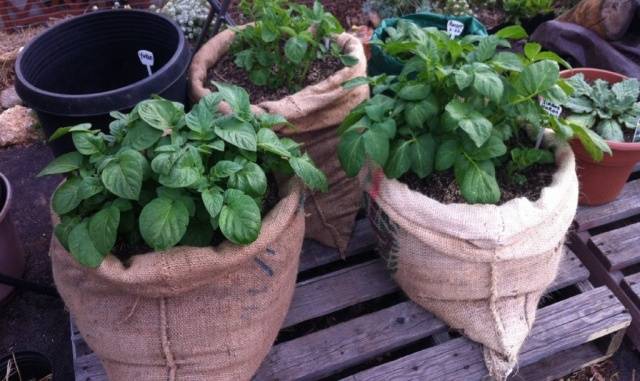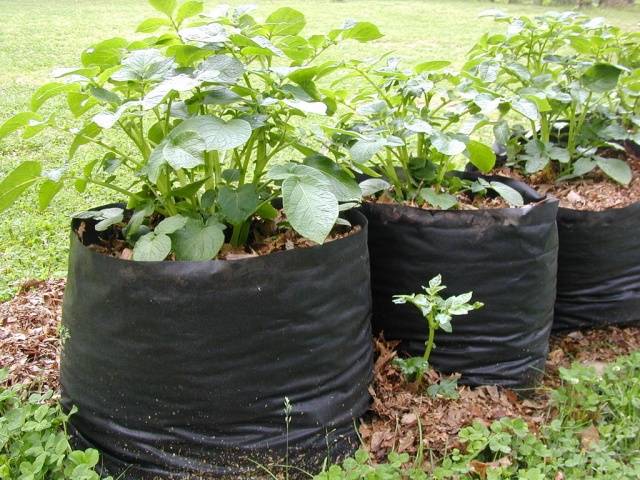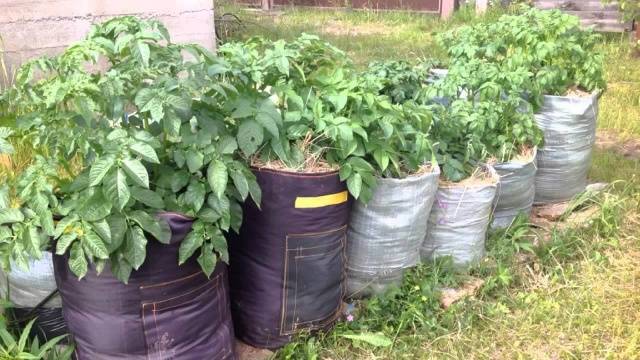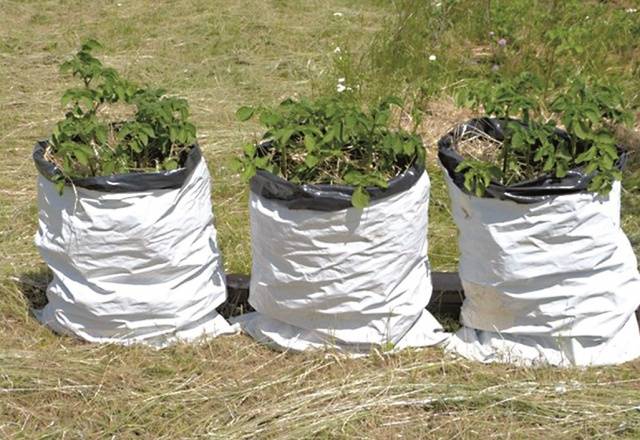Content
Many summer residents are often faced with a situation where there is not enough land to plant what they want. You can save space in the garden by planting potatoes in bags. They can be placed anywhere on the site, the main thing is that it must be well lit. Sacks of potatoes will make a good temporary fence, they can be used to divide the site into zones. If you write down the bagging plan step by step, it will look like this:
- The choice of packaging for planting.
- Preparation of planting material.
- Soil preparation.
- The choice of the landing date.
- Landing.
- Care.
Each item will be described in detail below. To get an illustrative example, you can watch the video.
The choice of packaging for planting
For planting potatoes the following types of containers are suitable:
- White wicker bags;
- Special bags with valves;
- Black plastic bags;
- Large shuttle bags.
White wicker bags are suitable for the southern regions, in which the soil heats up less. If no new bags are used for planting, they must be thoroughly cleaned.
Special packages for planting potatoes are very convenient, but they are difficult to buy in small towns. In addition, their significant disadvantage is their high cost.
Black plastic bags can be purchased at any hardware store and are relatively inexpensive.
Many houses have plastic luggage bags, which are popularly called "shuttle" bags. If you do not plan to use them for their intended purpose, you can make a small potato garden out of them.
In bags that do not have holes, holes must be made for ventilation and drainage of excess water.
Preparation of planting material
Most of the old varieties form no more than 7 tubers, some of them do not grow more than 5 grams.
Potatoes to be planted must be whole, healthy, weighing at least 100 grams.
Soil preparation
To grow potatoes in bags, it is very important to thoroughly prepare the soil before planting. Potatoes need light, nutritious soil for normal growth. In heavy clay soil, the development of tubers is difficult.
The approximate composition of the soil mixture for planting potatoes in bags:
- A bucket of garden soil;
- Humus bucket;
- 2 - 3 liters of river sand;
- 1 - 2 liters of ash;
- Nitrogen fertilizers or rotted manure.
All components are thoroughly mixed before planting, choosing all large fractions - stones, branches and more.
Landing dates
To determine when to start planting potatoes in bags, you need to imagine when it will be possible to take them outside. From this date, you need to count two months, so much potatoes can spend in bags without sunlight. This time will be needed for the formation of the root system.
If potatoes are planted immediately outdoors, planting begins when the average daily temperature will be stable above 12 degrees.
Landing
Planting begins with the formation of a drainage layer. Drainage is poured at the bottom of the bag, its layer should be at least 15 cm. Gravel, gravel, cobblestones and other materials can be used as drainage. The edges of the bag are rolled up.If the bag is going to be transported, it is advisable to make a hard bottom so as not to damage the roots during transportation.
On top of the drainage layer, 20-30 cm of prepared soil is poured, slightly crushing it. Two or three potatoes are laid out on the ground. It is advisable to treat the planting material with insecticides.
Potatoes are covered with earth, the layer of which should be at least 20 cm. The earth is watered, but not too abundantly. For initial development, tubers do not need high humidity.
Potatoes should be grown at a temperature of at least 15 degrees Celsius. If potatoes are grown in February or March, the bags are placed in a warm room. Potatoes do not need lighting at this stage.
Potatoes grown outdoors are covered with a thick dark film to avoid excess moisture evaporation.
The sprouts that have appeared continue to fall asleep until the height of the bag with the earth reaches 50-60 cm. After that, the bag is transferred to a bright place, the sprouts need a lot of sunlight for normal development. The entire planting process can be watched in the video.
Care
Caring for bagged potatoes consists of watering, loosening the soil and treating harmful insects. It is advisable to water the potatoes once a week, abundantly flooding the bushes. The drainage holes must be monitored, the water must not stagnate. Blocked holes must be cleaned.
The soil is usually loosened once a week after watering, when the top layer is dry. To avoid this procedure, you can cover the soil surface with mulch.
It is necessary to regularly inspect the bushes in order to notice pests in time. In addition to the traditional Colorado potato beetle, aphids and various types of mites can seriously harm potatoes.
Even if there is enough land for planting, this method may appeal to those who want to grow early potatoes, but do not have a greenhouse.
Testimonials













